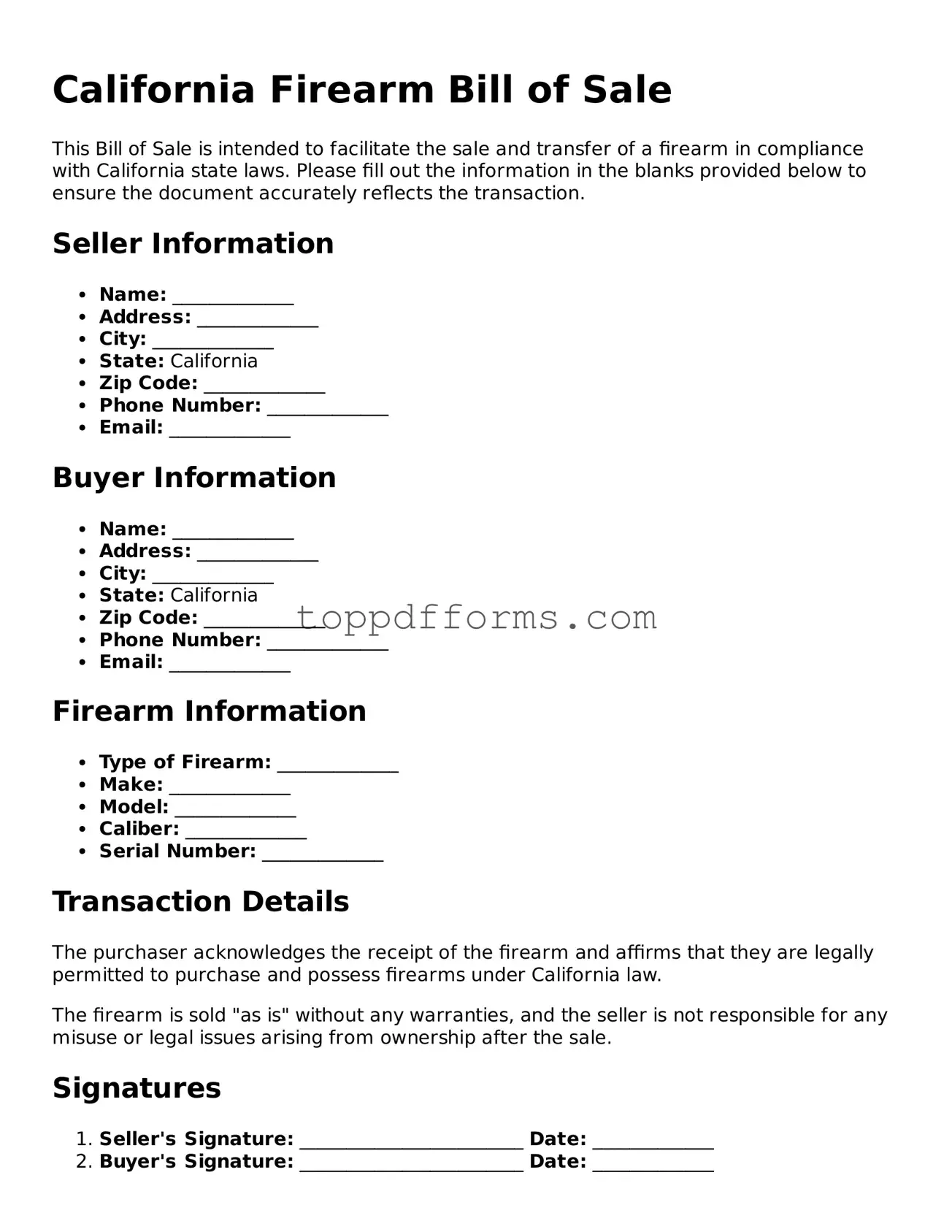What is a California Firearm Bill of Sale form?
The California Firearm Bill of Sale form is a document used to record the sale or transfer of a firearm between individuals. This form serves as proof of the transaction and includes important details such as the buyer's and seller's information, the firearm's description, and the date of the sale. It is essential for both parties to keep a copy for their records, as it may be needed for legal or verification purposes in the future.
Is the Firearm Bill of Sale form required in California?
While a Firearm Bill of Sale form is not legally mandated for private sales of firearms in California, it is highly recommended. Using this form can help protect both the buyer and seller by providing a written record of the transaction. Additionally, California law requires that certain firearm transfers be conducted through a licensed dealer, which may necessitate additional documentation.
What information should be included in the Firearm Bill of Sale?
A complete Firearm Bill of Sale should include the following details: the names and addresses of both the buyer and seller, the date of the transaction, a description of the firearm (including make, model, caliber, and serial number), and the purchase price. Both parties should sign and date the form to validate the transaction. Including this information ensures clarity and can help resolve any disputes that may arise later.
Can I use a generic Bill of Sale for firearms in California?
While a generic Bill of Sale can be used for various transactions, it is advisable to use a specific Firearm Bill of Sale form for firearm transactions in California. This ensures that all necessary information is captured and complies with state regulations. A specialized form also provides clarity regarding the nature of the transaction, which can be beneficial if legal questions arise later.
What should I do if I lose the Firearm Bill of Sale?
If the Firearm Bill of Sale is lost, it is important to act quickly. Both the buyer and seller should try to create a duplicate if possible, using any available records or receipts from the transaction. If no copies are available, it may be necessary to draft a new Bill of Sale, including all relevant details, and have both parties sign it again. Keeping a secure record of such documents can prevent future complications.
